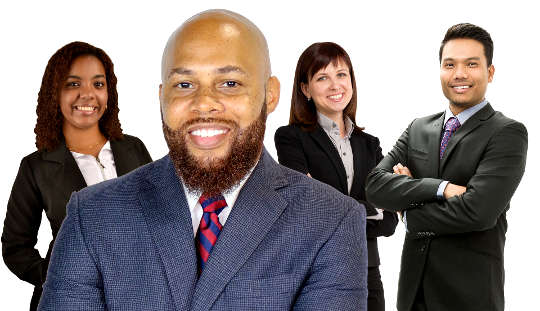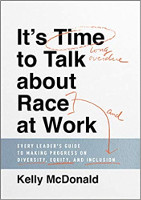
Image by Tumisu
The beer industry is huge in Colorado; there are more than 400 independent craft breweries throughout the state. While each has its own personality and vibe, and the beers they brew are their own recipes and flavors, there is one thing that almost all of them have in common: they are owned by White men.
Beer brewing is one of those industries that attracts a lot of men to it and most of those men happen to be White. In fact, there’s even a good-natured joke about it: “Craft brewing—the hobby for straight, White men.” But Atrevida Beer Co. in Colorado Springs is breaking that mold and stereotype.
Atrevida bills itself as a “female-forward, Latin-inspired brewery.” The company is owned and run by married couple Jess and Rich Fierro. Jess is Colorado’s first female and Latina brewery owner and head brewer. She’s won numerous awards for her business and her beer, and she was the winner on Season 1 of Beerland.
Jess really, really knows beer. She also knows what it’s like to be a minority in her industry. In fact, Jess is a “double minority”: she’s a woman and she’s Hispanic. There aren’t many women who are brewers, and Jess and Rich don’t know of a single other Latina who brews professionally. Their Mexican heritage, traditions, flavors, and foods inspire many of the beer recipes that Jess creates.
A Unique Niche
They’ve created a unique niche for themselves in a very crowded business space. New breweries open every week, and many don’t survive the highly competitive market and saturation of breweries. Atrevida has been in business since 2017 and each year, its business grows. There are several reasons for this, starting with a great product and, of course, running the business well.
Jess and Rich attribute much of their success to the defining principle of their business: diversity. They believe so strongly in the power of diversity that the brewery’s tagline is “Diversity: It’s on Tap.” The signage for their business features two large signs: one with the Atrevida brewery name, of course, and one with “Diversity: It’s on Tap.” But here’s the kicker: the sign for their tagline is as large as the sign that has the name of the brewery. They make it clear that everyone is welcome at their brewery.
Showing Solidarity
When George Floyd was killed by Minneapolis police officers, Jess and Rich were moved to make a statement that their business stands with diversity. They made their website all black the next day, with just the words Remember George Floyd. It was their quiet way of showing solidarity for those who were grieving and waking up to a moment of reckoning. Then an interesting thing happened.
A woman from the Black Latino Leadership Coalition of Colorado Springs contacted Jess. (Colorado Springs is not a very diverse area at all. The local Black and Latino communities have joined together as one coalition because they have mutual goals and can accomplish more by working together than independently. Brilliant.) Although Jess knew of the coalition, she wasn’t involved in it.
The woman introduced herself to Jess, said she’d seen their blacked-out website page, and thanked Jess for her support. She told her she wanted to host an event on Juneteenth, to educate the community about the date’s significance and celebrate the date. Juneteenth, June 19, is the day that commemorates the end of slavery in the United States.
The woman asked if Jess would be willing to brew a special beer in honor of Juneteenth. Jess agreed and went to work, tirelessly researching the food and drink that slaves consumed in celebration on that day. She learned that the common celebratory drink was a specific type of cream soda and that the foundational flavor of that soda is vanilla. Jess created a special beer using vanilla and other flavors that featured significantly in the Juneteenth celebratory foods.
Jess and Rich also offered their brewery space as the place to hold the event. The woman from the Black Latino Coalition was thrilled and the event was a smashing success. People came and mingled, ate and drank, and when the time came for the brief educational portion of the evening, Jess told the attendees about the Juneteenth beer and how she created it. The woman from the coalition then shared the history of Juneteenth and the audience asked questions and had a chance to talk and share.
Jess told me that working with the coalition on the Juneteenth event was a win-win for everyone: the woman from the coalition hosted the event in a cool brewery, generously offered at no charge.
The event attracted many people who had never stepped into Atrevida before and they fell in love with the brewery. Jess sold a lot of her special Juneteenth beer and, without having to “beat the diversity drum,” it was clear to the audience that her business genuinely supports diversity in a very nondiverse community.
Then another interesting thing happened. Several weeks after the Juneteenth event, a business colleague of Jess called her and said she was trying to hire more diverse employees and did Jess have any idea where she could turn to find Black candidates? Yes! Jess immediately put her in touch with the woman from the coalition.
What to Do If You Don’t Know Any People of Color
If you know people of color, personally or professionally, share with them your goals for becoming a more diverse and equitable workplace and ask if they have any suggestions on diverse businesspeople you should meet and get to know or ways to become meaningfully involved in diverse communities.
But what if you don’t know any people of color? You can still make inroads and build relationships that are mutually helpful and beneficial with diverse businesspeople, even without an introduction from a friend or colleague.
Here are six ways to find and approach diverse businesspeople in your community:
1. Identify local community resources that can help you directly or guide you to others.
Almost every community has a Chamber of Commerce, a YMCA or YWCA, an Out & Equal chapter (a national nonprofit organization for LGBTQ workplace equality), or some similar organization. Many diverse communities also have a Black Chamber, Hispanic Chamber, Women’s Chamber, Pan-Asian Chamber, and/or Native American Chamber, and in some communities, these different chambers have merged into one or formed alliances. Don’t rule out churches and places of worship—their members are likely to be well-connected in the business community. A quick Google search can point you to numerous diverse organizations and the people who run them.
2. Do your homework.
Dig into the diverse organizations you find online and identify which ones are doing work that you admire and that align with your goals. When you reach out to organizations, you’ll want to be able to share why you would like to start a conversation with them. It will give you credibility with them. Keep in mind that diverse organizations are being bombarded with companies that want to partner with them. You want to stand out by offering specific ways you can help them achieve their goals, but you won’t know what their goals are unless you dig in.
Here’s an example: AssetMark is a money management firm that works with independent financial advisors. Executives at AssetMark wanted to bolster the company’s commitment to DE&I (diversity, equity, and inclusion) and wanted to make sure they “got it right.” Esi Minta-Jacobs, vice president of human resources at AssetMark, said, “We want to make sure our contribution is impactful.” They’re using their expertise in money management to start a financial literacy program for underserved communities—what a great idea and a meaningful way to align what they do with creating long-term, positive change.
3. Do not spread yourself too thin.
There may be so many options and worthy organizations that it can be overwhelming. It’s better to start with one or two organizations that you feel you can really help than try to be involved with a dozen organizations and spread yourself too thin to do much good for anyone. Focus on no more than two groups so that you can make the greatest impact.
4. Introduce yourself.
Get in touch with the organizations that you want to connect with and start by genuinely complimenting them on their work in a particular area. Then share information about your company and your diversity efforts, and express interest in helping them with their objectives. Be honest and upfront about your goals and issues; truth breeds trust. Be sure to communicate how you want to help them. An email introducing yourself and your company or team could go like this:
My name is Steve Johnson and I am with the XYZ Company. The Black Latino Coalition of Colorado Springs is doing outstanding work with scholarship programs for local high school and community college students. At the XYZ Company, we believe that higher education should be accessible to all, especially underserved and diverse communities. We have created several programs of our own to help with this, but we feel that greater impact can be achieved if we work together with other community efforts. I’d like to have a conversation with you to learn how we can get involved in helping you achieve your goals, perhaps starting with support for your Spring Scholarship Donation Drive. I can be reached at 555-123-4567. Thank you.
5. Help before asking for help.
Have you ever had someone express interest in who you are or what you do, or offer to help you with something, but then learn that what they really want is for you to help them? It’s the worst. You feel used. It’s not just because their offer to help is insincere; it’s also because it’s opportunistic. And that’s disrespectful.
When working with other businesspeople and organizations, you must “pay your dues.” When you sincerely help others accomplish their goals, you earn their trust and respect. That trust and respect earns you some equity and makes it OK for you to ask for help down the line. Jess at Atrevida demonstrated this: she helped the coalition host their event and even brewed a special beer just for them. Weeks later, when her colleague needed a connection, she knew she could provide that and that the coalition would be happy to help. You can’t get without first giving.
6. Show up.
Many community organizations are nonprofits, with limited budgets and finite resources. They depend heavily on volunteers to help get things done. Know this and offer your time (and your employees’ time) to help with their efforts. Don’t just write a check. Help them do the work. Your physical presence counts. It also provides the opportunity to have genuine, meaningful, and ongoing conversations with people who may be different from you.
Why Contact with People Who Are Different than You Matters
A few studies suggest that diversity, equity, and inclusion training sessions don’t really work to change employees’ minds, attitudes, and behaviors. It’s a discouraging thought. The studies reveal that there is a short-term uptick in working to eliminate bias or change behavior, but it doesn’t last.
To be fair, the studies show that the same pattern happens with almost any kind of training. For example, equipment safety training results in a short-term boost of safer work practices, but it doesn’t last. That’s why most types of training are ongoing: sales training, management training, leadership training, customer service training—you’re never “done.” Companies invest in ongoing training because stand-alone training doesn’t change people. What does change people is contact.
Exposure to others results in real and lasting change. When we get to know someone and learn about them—their job, their family, their hopes and fears, their likes and dislikes, their sense of humor, their beliefs and values—we learn that we have more in common than we thought, that fundamentally, we’re more alike than not. We learn that people are people.
The same studies that tell us that one-off diversity training doesn’t result in lasting behavior change also tell us that contact with people who are different does result in lasting change. The conversations that you and your team have when working alongside people with diverse backgrounds matter. Show up. Listen. Talk. Share. And watch real change happen.
Article Source:
BOOK: It's Time to Talk about Race at Work
It's Time to Talk about Race at Work: Every Leader's Guide to Making Progress on Diversity, Equity, and Inclusion
by Kelly McDonald In It's Time to Talk about Race at Work, acclaimed speaker and bestselling author Kelly McDonald delivers a much-needed roadmap for business people. This book will help you successfully create a fair and equitable workplace that recognizes diverse talent and fosters productive and constructive conversations in your organization.
In It's Time to Talk about Race at Work, acclaimed speaker and bestselling author Kelly McDonald delivers a much-needed roadmap for business people. This book will help you successfully create a fair and equitable workplace that recognizes diverse talent and fosters productive and constructive conversations in your organization.
This book shows you exactly what to do and how to do it so that you can make real progress on diversity and inclusion, regardless of the size of your organization.
For more info and/or to order this book, click here. Also available as an Audiobook and a Kindle edition.
About the Author
 What does a blond haired, blue-eyed, White woman know about diversity? Kelly McDonald is considered one of the nation’s top experts in diversity, equity, and inclusion, leadership, marketing, the customer experience, and consumer trends. She is the founder of McDonald Marketing, which has twice been named one of the “Top Ad Agencies in the U.S.” by Advertising Age magazine and ranked as one of the fastest-growing independently-owned companies in the U.S. by Inc. Magazine.
What does a blond haired, blue-eyed, White woman know about diversity? Kelly McDonald is considered one of the nation’s top experts in diversity, equity, and inclusion, leadership, marketing, the customer experience, and consumer trends. She is the founder of McDonald Marketing, which has twice been named one of the “Top Ad Agencies in the U.S.” by Advertising Age magazine and ranked as one of the fastest-growing independently-owned companies in the U.S. by Inc. Magazine.
Kelly is a sought-after speaker and was named one of the “10 Most Booked Speakers in the U.S.”. She is the author of four bestselling books on diversity & inclusion, marketing, the customer experience and leadership. When she’s not on the road speaking, she enjoys boxing (yes, boxing, not kickboxing) – and shopping for high heels.
Visit her website at McDonaldMarketing.com



























